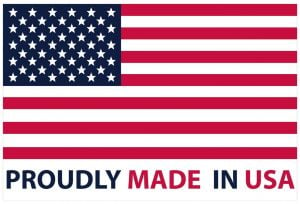By now, most businesses understand that content creation is integral to the success of any digital marketing strategy they deploy. Everyone has heard the famous phrase, “Content is king.” The saying is perhaps a tad overused now in marketing spaces, but it is repeated again and again for a reason—because it’s true! However, content is only king when it is consistent.
Unfortunately, barren blogs and empty social media pages often read as untrustworthy to potential customers. Today’s customers expect much more dedication and online engagement from brands than ever before.
What can more consistent content creation do for your business?
Audience Engagement
You can’t expect to build a loyal following with one-off blog posts, occasional social media posts, or infrequent email newsletters. People simply won’t stick around. Why? Even if a business releases high-quality content, infrequent or random distribution of the content will cause that business to get lost in the crowd. With a veritable ocean of content available to them, today’s consumers won’t wait around—they will move on and most likely forget about your brand. Content is a competitive space. Consistency will help distinguish your business in the crowd.
Businesses must build a consistent content routine and condition their audience to expect new, engaging content. This will keep customers frequently engaged and coming back to the business’s website or social media pages at regular intervals. A business starting with little-to-no following may be discouraged with frequent posting in the beginning, but content is one of the most effective marketing methods for a reason. Though it may take time to build, consistent content is a digital marketing tactic that contributes to long-term growth and sustainability.
Brand Recognition
Consistent content makes your brand memorable.
When you release content consistently, your brand presence is repeatedly appearing before your target audience. Consistency affects the mind. When people frequently see and recognize your brand—whether that be by seeing your logo, graphics, or colors—your business increases its chances of increasing leads conversions and driving sale goals.
People prefer to buy new products from brands that are familiar to them. Consistent content gives your business the opportunity to become familiar with a wider audience. High-quality content reinforces positive brand experiences, captures your audience’s attention, and keeps them coming back so they can build that recognition and familiarity.
Authority & Trust
Consumers are looking to see what businesses have to say and what knowledge they have to share. Producing and sharing informational content that answers questions, educates, and showcases expertise positions your business an industry expert. This type of content provides proof of your business’s experience and establishes your authority. If consumers do not feel confident in your business’s expertise, they will have difficulty to trusting your products or services.
Consistently demonstrating your industry knowledge not only positions your business as a leader, but it is essential to gain your audience’s trust and confidence. In addition, the regular posting of such content doubly reinforces your business’s reliability because your audience implicitly trusts you turn out valuable content.
The more consistent and high-quality your content is, the more positive impact it will have on your SEO efforts. Search engines reward the frequency at which websites publish new content. Not only that, but written content allows businesses to optimize their website with more keywords and phrases.
As a result, this makes content marketing tactics like blogs a powerful SEO tool. Online visibility grows your business’s authority and strengthens customer trust. Increased visibility also directly improves website traffic.
Make Content Distribution a Priority
How often is your business publishing content? Could your business benefit from staying more engaged with your customers?
When it comes to content, consistency is key to create an impact with your audience. In terms of frequency and deployment, automation is your ally. Automation tools can help you schedule and deploy content like blog posts, social media posts, and email newsletters to increase your customer engagement and reach your customers at the right times.
Struggling to create engaging content in addition to running your business? Sun Sign Designs can help you there, too. Contact us today for a free strategy session!



